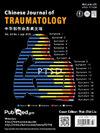Interposition of acellular amniotic membrane at the tendon to bone interface would be better for healing than overlaying above the tendon to bone junction in the repair of rotator cuff injury
IF 1.9
4区 医学
Q2 ORTHOPEDICS
引用次数: 0
Abstract
Purpose
The retear rate of rotator cuff (RC) after surgery is high, and the rapid and functional enthesis regeneration remains a challenge. Whether acellular amniotic membrane (AAM) helps to promote the healing of tendon to bone and which treatment is better are both unclear. The study aims to investigate the effect of AAM on the healing of RC and the best treatment for RC repair.
Methods
Thirty-three Sprague Dawley rats underwent RC transection and repair using microsurgical techniques and were randomly divided into the suturing repair only (SRO) group (n = 11), the AAM overlaying (AOL) group (n = 11), and the AAM interposition (AIP) group (n = 11), respectively. Rats were sacrificed at 4 weeks, then examined by subsequent micro-CT, and evaluated by histologic and biomechanical tests. The statistical analyses of one-way ANOVA or Kruskal-Wallis test were performed using with SPSS 23.0. A p < 0.05 was considered a significant difference.
Results
AAM being intervened between tendon and bone (AIP group) or overlaid over tendon to bone junction (AOL group) in a rat model, promoted enthesis regeneration, increased new bone and cartilage generation, and improved collagen arrangement and biomechanical properties in comparison with suturing repair only (SRO group) (AOL vs. SRO, p < 0.001, p = 0.004, p = 0.003; AIP vs. SRO, p < 0.001, p < 0.001, p < 0.001). Compared with the AOL group, the AIP group had better results in micro-CT evaluation, histological score, and biomechanical testing (p = 0 0.039, p = 0.011, p = 0.003, respectively).
Conclusion
In the RC repair model, AAM enhanced regeneration of the tendon to bone junction. This regeneration was more effective when the AAM was intervened at the tendon to bone interface than overlaid above the tendon to bone junction.
在修复肩袖损伤时,将无细胞羊膜置于肌腱与骨骼交界处比覆盖在肌腱与骨骼交界处上方更有利于愈合
目的肩袖(RC)术后恢复率高,快速、功能性的内假体再生仍是一个挑战。脱细胞羊膜(AAM)是否有助于促进肌腱骨愈合以及哪种治疗方法更好尚不清楚。本研究旨在探讨AAM对RC愈合的影响及修复RC的最佳治疗方法。方法采用显微外科技术对33只Sprague Dawley大鼠进行RC横断修复,随机分为单纯缝合修复(SRO)组(n = 11)、AAM覆盖(AOL)组(n = 11)和AAM介入(AIP)组(n = 11)。4周处死大鼠,随后进行显微ct检查,并进行组织学和生物力学试验。采用spss23.0进行单因素方差分析或Kruskal-Wallis检验。A & p;0.05为差异有统计学意义。结果与单纯缝合修复大鼠模型(SRO组)相比,在肌腱与骨之间干预(AIP组)或覆盖在肌腱与骨交界处(AOL组)的saam促进了肌腱端再生,增加了新骨和软骨的生成,改善了胶原排列和生物力学性能(AOL vs. SRO, p <;0.001, p = 0.004, p = 0.003;AIP vs. SRO, p <;0.001, p <;0.001, p <;0.001)。与AOL组相比,AIP组在显微ct评价、组织学评分、生物力学测试方面均优于AOL组(p = 0.039、p = 0.011、p = 0.003)。结论在RC修复模型中,AAM增强了肌腱到骨交界处的再生。当AAM在肌腱与骨交界处进行干预时,这种再生比覆盖在肌腱与骨交界处上方更有效。
本文章由计算机程序翻译,如有差异,请以英文原文为准。
求助全文
约1分钟内获得全文
求助全文
来源期刊

Chinese Journal of Traumatology
ORTHOPEDICS-
CiteScore
3.80
自引率
4.80%
发文量
1707
审稿时长
28 weeks
期刊介绍:
Chinese Journal of Traumatology (CJT, ISSN 1008-1275) was launched in 1998 and is a peer-reviewed English journal authorized by Chinese Association of Trauma, Chinese Medical Association. It is multidisciplinary and designed to provide the most current and relevant information for both the clinical and basic research in the field of traumatic medicine. CJT primarily publishes expert forums, original papers, case reports and so on. Topics cover trauma system and management, surgical procedures, acute care, rehabilitation, post-traumatic complications, translational medicine, traffic medicine and other related areas. The journal especially emphasizes clinical application, technique, surgical video, guideline, recommendations for more effective surgical approaches.
 求助内容:
求助内容: 应助结果提醒方式:
应助结果提醒方式:


